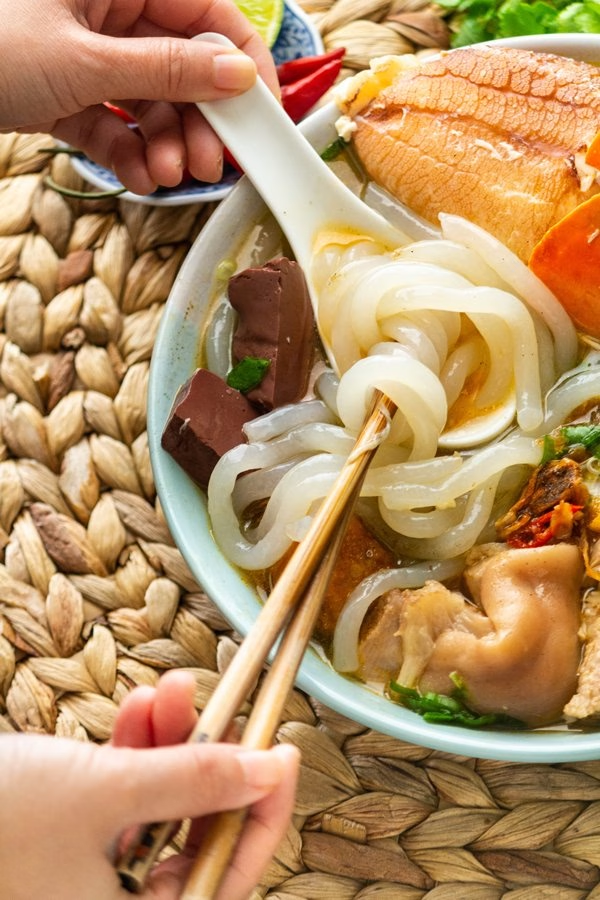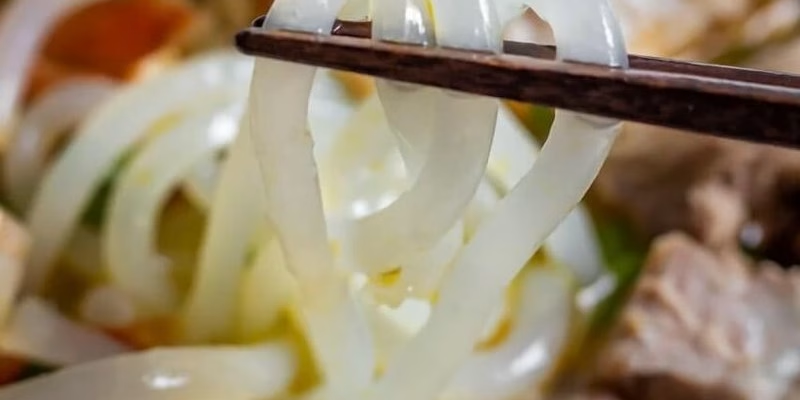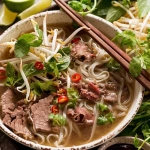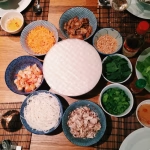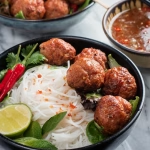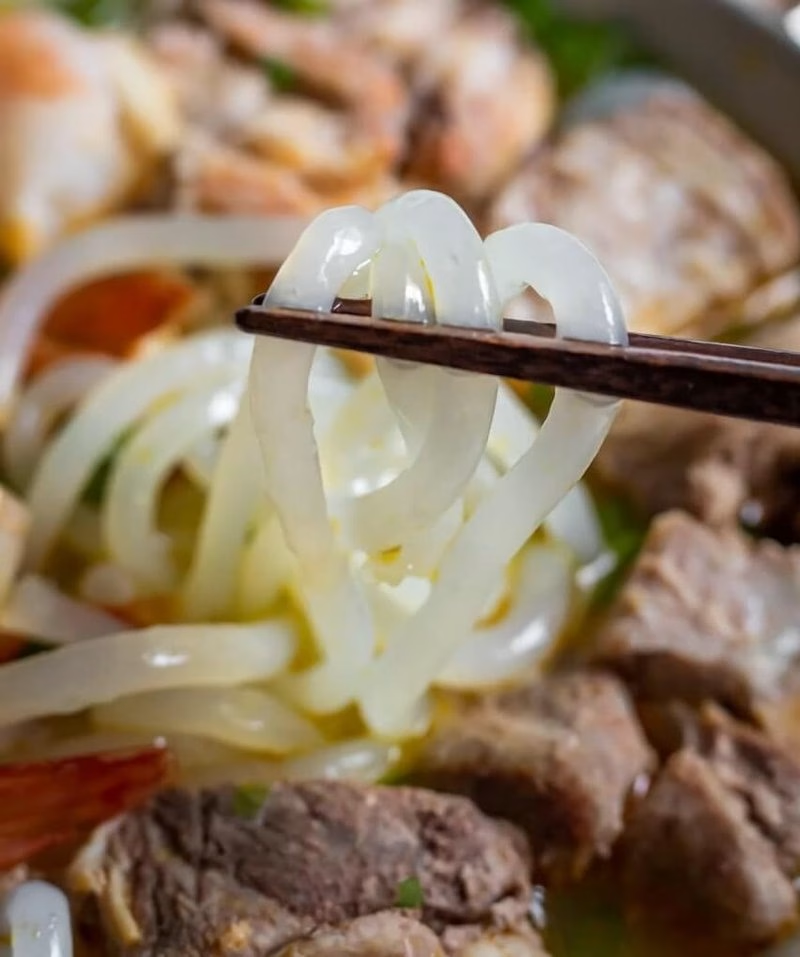
Have you ever tasted a dish that transported you straight to another culture? Banh Da Cua (Crab Noodle Soup) is one of those delights—a vibrant and hearty Vietnamese soup that showcases a perfect blend of sweet crab meat and savory broth. Originating from the coastal regions of Vietnam, this dish is loved for its unique combination of flavors and textures. Whether you’re slurping up the soft flat noodles, savoring the rich crab broth, or diving into the fresh herbs, every bite is an experience of its own.
In this article, you’ll discover the essential Banh Da Cua (Crab Noodle Soup) ingredients, learn about delicious Banh Da Cua (Crab Noodle Soup) variations, and get a comprehensive guide on how to make Banh Da Cua (Crab Noodle Soup) at home. It’s time to bring a slice of Vietnam into your kitchen!
Ingredients
| Ingredient | Measurement | Description |
|---|---|---|
| Crab meat | 200g | Fresh crab meat provides a sweet and delicate flavor that is the star of Banh Da Cua (Crab Noodle Soup). |
| Banh Da noodles | 250g | These flat rice noodles are essential for achieving the authentic texture of this Vietnamese dish. |
| Fish sauce | 2 tbsp | This umami-rich sauce adds depth and authenticity to the broth, enhancing the overall flavor profile. |
| Garlic | 4 cloves | Fresh garlic enhances the aroma and depth of flavor in Banh Da Cua (Crab Noodle Soup). |
| Onion | 1 large | Onion adds sweetness and richness when sautéed and forms the aromatic base of the soup. |
| Vegetable stock | 1L | This is the broth’s foundation, providing warmth and body to the soup. |
| Fresh herbs (cilantro, mint, basil) | to taste | Herbs add a fresh burst of flavor and enhance the presentation of your Banh Da Cua. |
| Chili peppers | 1-2, sliced | For those who love some heat, chili peppers can elevate the soup with a spicy kick! |
Step-by-Step Instructions
- Prepare the Ingredients: Start by washing and chopping all the vegetables and herbs. Make sure to pick the freshest ingredients to contribute to the authentic taste of Banh Da Cua (Crab Noodle Soup).
- Cook the Base: In a large pot, heat some oil over medium heat. Sauté the finely chopped onions and minced garlic until they are golden brown and fragrant. This step creates a flavorful base for your soup.
- Add the Broth: Pour in the vegetable stock and bring it to a simmer. Add the fish sauce, allowing it to infuse into the broth, making it rich and delicious.
- Incorporate the Crab: Gently add the fresh crab meat to the simmering broth. Let it cook for about 5-7 minutes, ensuring the flavors meld beautifully together.
- Cook the Noodles: In a separate pot, cook the Banh Da noodles according to package instructions. Once cooked, drain and set aside. This gives you the perfect chewy texture that complements the soup.
- Assemble the Dish: In serving bowls, place a handful of cooked noodles. Ladle the hot crab broth over the noodles, making sure to include plenty of crab. Top with fresh herbs and sliced chili peppers for a vibrant presentation.
- Serve Hot: Enjoy your homemade Banh Da Cua (Crab Noodle Soup) warm, perhaps with a side of lime wedges and extra herbs for added freshness. Savor every delightful sip!
Pro Tips
- Use Fresh Ingredients: Quality crab meat makes a huge difference. If possible, opt for fresh crab rather than canned for the best flavor.
- Adjust Thickness: If your broth is too thick, you can always add more vegetable stock or water until you reach the desired consistency.
- Customize Your Soup: Feel free to add other ingredients like tofu or shrimp for variations on the traditional Banh Da Cua recipe.
- Herb Arrangement: When serving, arrange herbs in a way that adds color and freshness—it’s appealing and adds great flavor!
- Heat Control: Adjust the level of spice by controlling the amount of chili peppers you add to the soup. Start with a little if you’re unsure!
Nutritional Information
| Nutrient | Per Serving |
|---|---|
| Calories | 360 |
| Protein | 20g |
| Carbohydrates | 45g |
| Saturated Fats | 1g |
| Fiber | 3g |
| Cholesterol | 70mg |
| Sugars | 2g |
| Fat | 8g |
FAQs
What is the best way to store Banh Da Cua (Crab Noodle Soup)?
The best way to store leftover soup is to keep the noodles and broth separated. This prevents the noodles from becoming mushy. Refrigerate in airtight containers for up to 3 days.
Can Banh Da Cua (Crab Noodle Soup) be made vegan or gluten-free?
Yes! For a vegan version, you can substitute crab meat with mushrooms and use vegetable stock. For gluten-free options, opt for gluten-free noodles.
What are the best side dishes to serve with Banh Da Cua (Crab Noodle Soup)?
A fresh green salad or Vietnamese spring rolls make perfect companions for this soup, enhancing the meal’s overall freshness.
How long does it take to prepare Banh Da Cua (Crab Noodle Soup)?
Preparing this delicious soup takes about 30-40 minutes from start to finish, making it a quick and satisfying meal.
Can I freeze Banh Da Cua (Crab Noodle Soup) for later?
Yes, but remember to freeze the broth separately from the noodles. Thaw and reheat before serving for the best taste.
What kind of crab is best for Banh Da Cua?
Fresh blue crab or any sweet meat variety works best for Banh Da Cua (Crab Noodle Soup). Check your local fish market for the freshest options!
Can I add other proteins to Banh Da Cua?
Absolutely! Shrimp, scallops, or even tofu can be added for variety, creating a unique twist on this classic soup.
Is Banh Da Cua spicy?
The soup itself is not inherently spicy, but you can adjust the heat level by adding more chili peppers according to your taste.
Making Banh Da Cua (Crab Noodle Soup) at home is not just about cooking; it’s about bringing a piece of Vietnamese culture to your dining table. With its rich flavors and comforting warmth, this dish is sure to become a new favorite in your household. Don’t hesitate to get creative with the ingredients; after all, cooking is all about experimenting! So why not gather your ingredients and give it a try? We’d love to hear about your experience making this delicious crab noodle soup. Tried this recipe? Let us know your experience in the comments!
